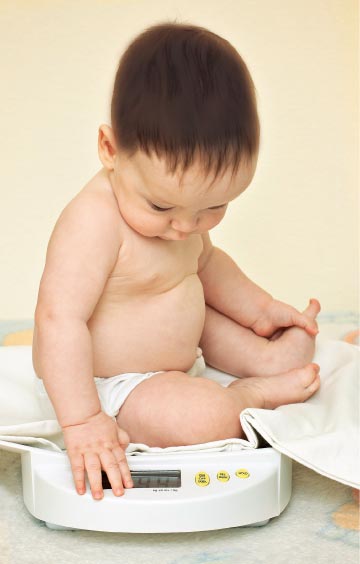The period after your child is born right up to his second birthday represents the rest of the 1000-day period and starts from day number 271 onward. This formative period is especially critical as it is the only time when he experiences rapid growth and development. Helping your child to meet his nutritional needs is crucial to ensure that his growth and development is optimised as well as to help to reduce his risk of contracting common childhood diseases and diet-related diseases later in life.
Breast milk is the Best Nutrition (0-6 months)
Nothing beats breast milk for new born babies, which is why both the World Health Organization (WHO) and the Malaysian Dietary Guidelines for Children and Adolescents recommend exclusive breastfeeding from birth for six months and to continue doing so for up to two years old.
When it comes to nutrition, a breastfeeding woman needs to eat slightly more food and maintain a healthy diet just as a pregnant woman needs to. Baby relies on the mother to provide the necessary nutrients to help him grow, thus it is important to continue eating a nutritious and balanced diet – just as pregnant women need to. The nutrients gained from the mother’s diet are essential to ensure that her baby receives enough (as well as good quality) breast milk and that the mother’s health is not jeopardised.
Lactating mothers have similar nutritional needs as a pregnant woman does, thus good nutrition should always continue to be practised especially during the first six months where the baby solely rely on mother’s milk. Milk production can be affected by what you eat, so lactating mothers need to eat healthily to ensure meeting the baby’s needs. Avoid drinking beverages containing caffeine or alcohol before you breastfeed as these substances can make it into the breast milk that your baby drinks.
It is important to note that during this stage in his life (first six months), your baby does not need any additional food, fluid, or water. Breast milk is nutritionally complete and it contains all the essential nutrients and antibodies that your baby needs. It is also rich in essential fatty acids such as ALA and LA which are in turn required to produce DHA and ARA (essential components for his physical and mental development).
Starting on Complementary Foods (6 months and above)
By the time that he is six months old, you will need to increase his intake of some nutrients. At around the 450th day onwards, which is very close to the halfway point of the 1000-day period, breast milk on its own will not suffice for his growing and nutritional needs. This is where complementary feeding must come into the picture.
Complementary feeding must be given both on time (i.e. at six months, not earlier or later) and adequately (given in appropriate amounts, frequency and consistency) to prevent malnutrition. Complementary foods should cater for one-third of baby’s daily energy needs when he is six to eight months, half when he is nine to twelve months and over 60% once he is older. Breastfeeding must be continued to be given to the baby even when the child has already started taking complementary foods.

When you start complementary feeding, make sure that the types of food, texture and consistency you feed your baby are appropriate to his stage of development. You will need to feed him with enough food to meet his energy needs, and to change the food texture and preparation methods as he grows older. This includes the texture and consistency of the foods to make it easy for him to eat without choking. As soon as he gets used to the foods that you provide him, you can vary what he eats. The frequency of feeding should also be increased gradually as he grows older. You should always follow the basic rule of Balance, Moderation, and Variety (BMV) in order to ensure that your child’s nutritional needs are met.
What is BMV?
Keeping an eye on your child’s growth
A simple yet effective method to gauge whether your child is getting enough nutrition and growing properly is to measure his height and weight regularly. Frequent monitoring is crucial especially for infants from birth to 12 months in particular, as this is the time when they will experience the most growth. Their weight will generally double within the first four to five months, and increases by almost four-fold by the age of two years.

WHO recommends using body mass index (BMI)-for-age as a useful tool to gauge whether your child is under- or over-weight according to the WHO growth standards, which will allow you to find out if he is growing within the normal range. Consult your baby’s doctor or paediatrician to ensure he is growing right and monitor his growth.
This article is a continuation of our Nutrition in the First 1000 Days” article.







Comments